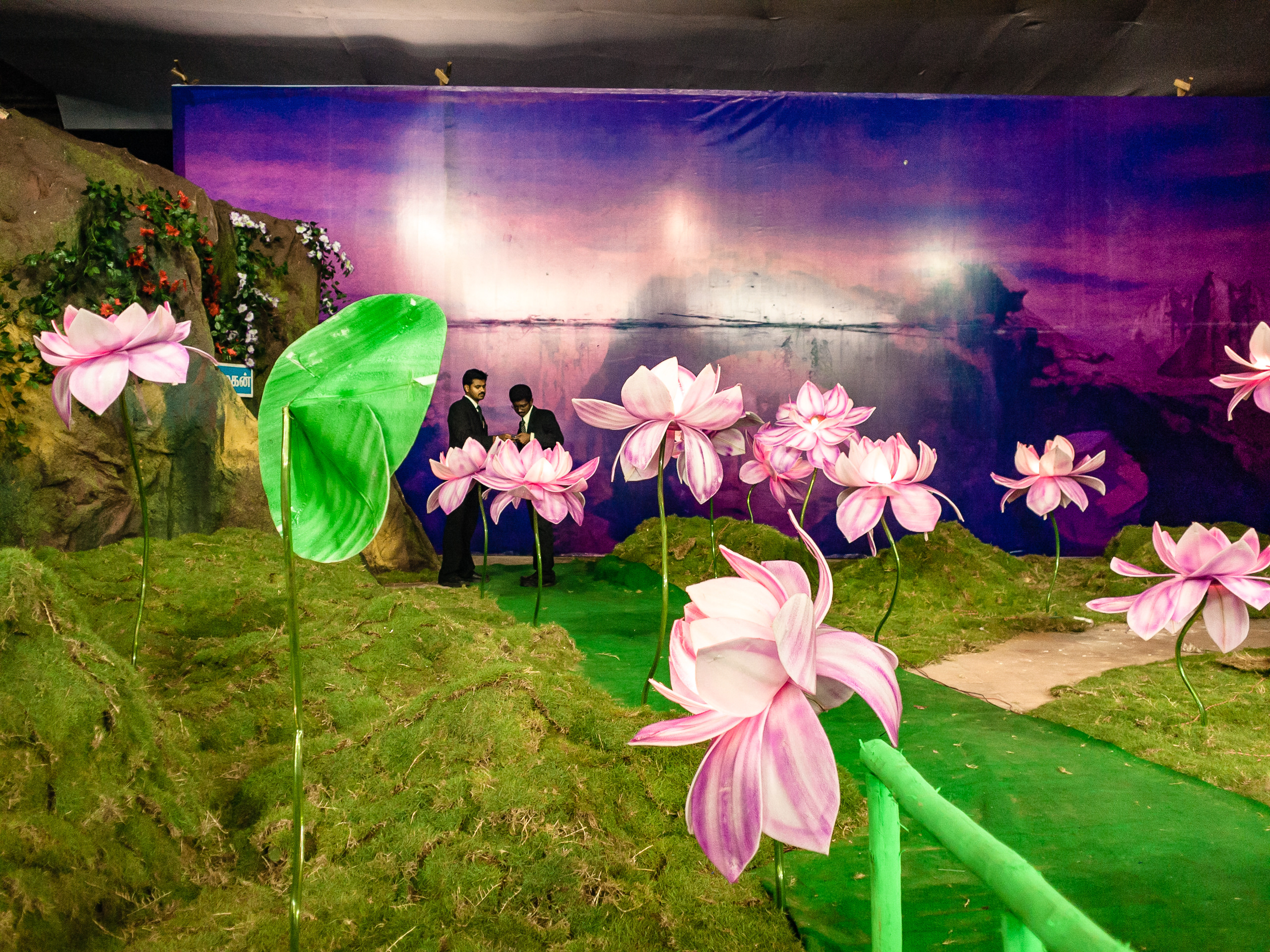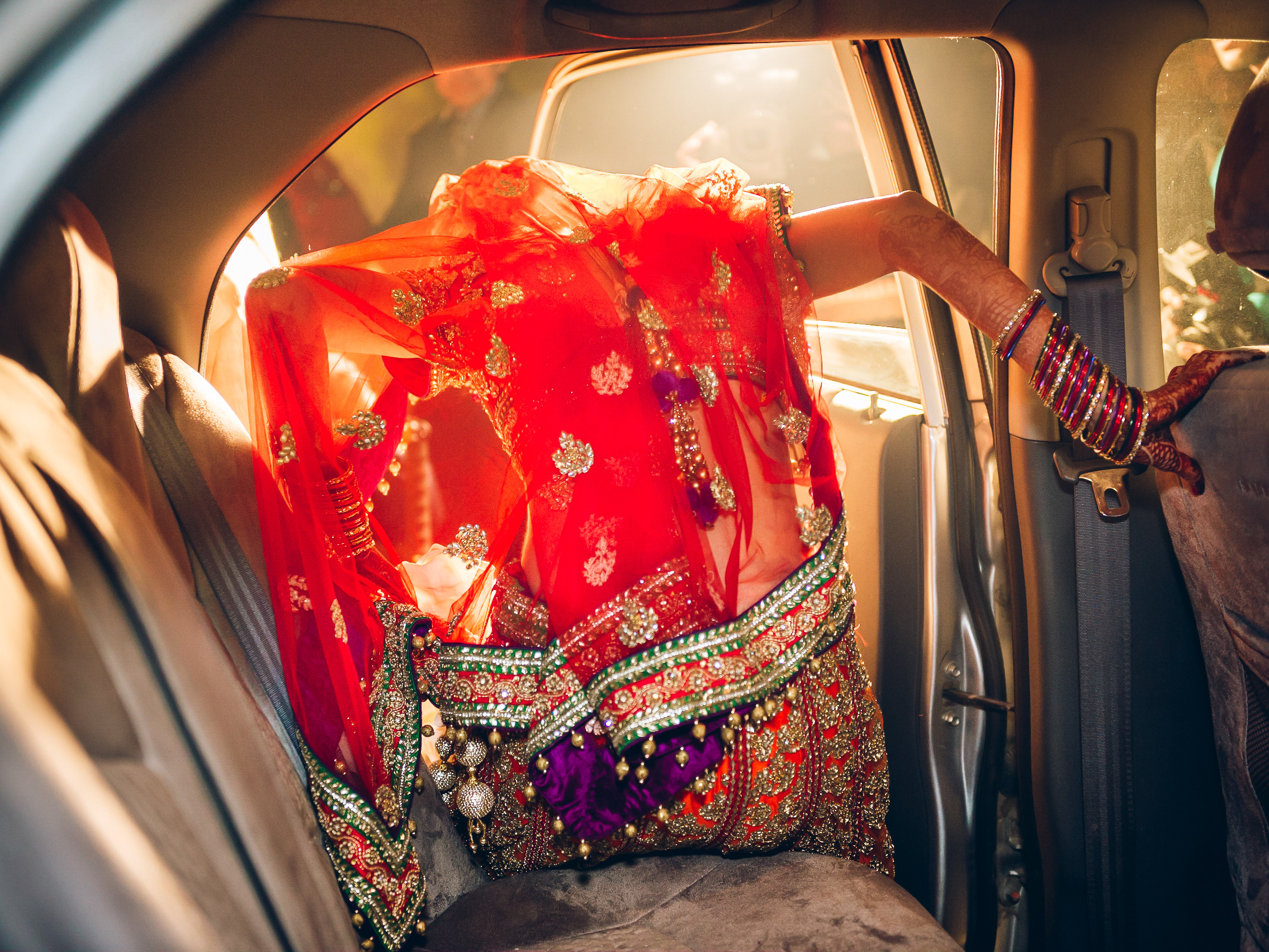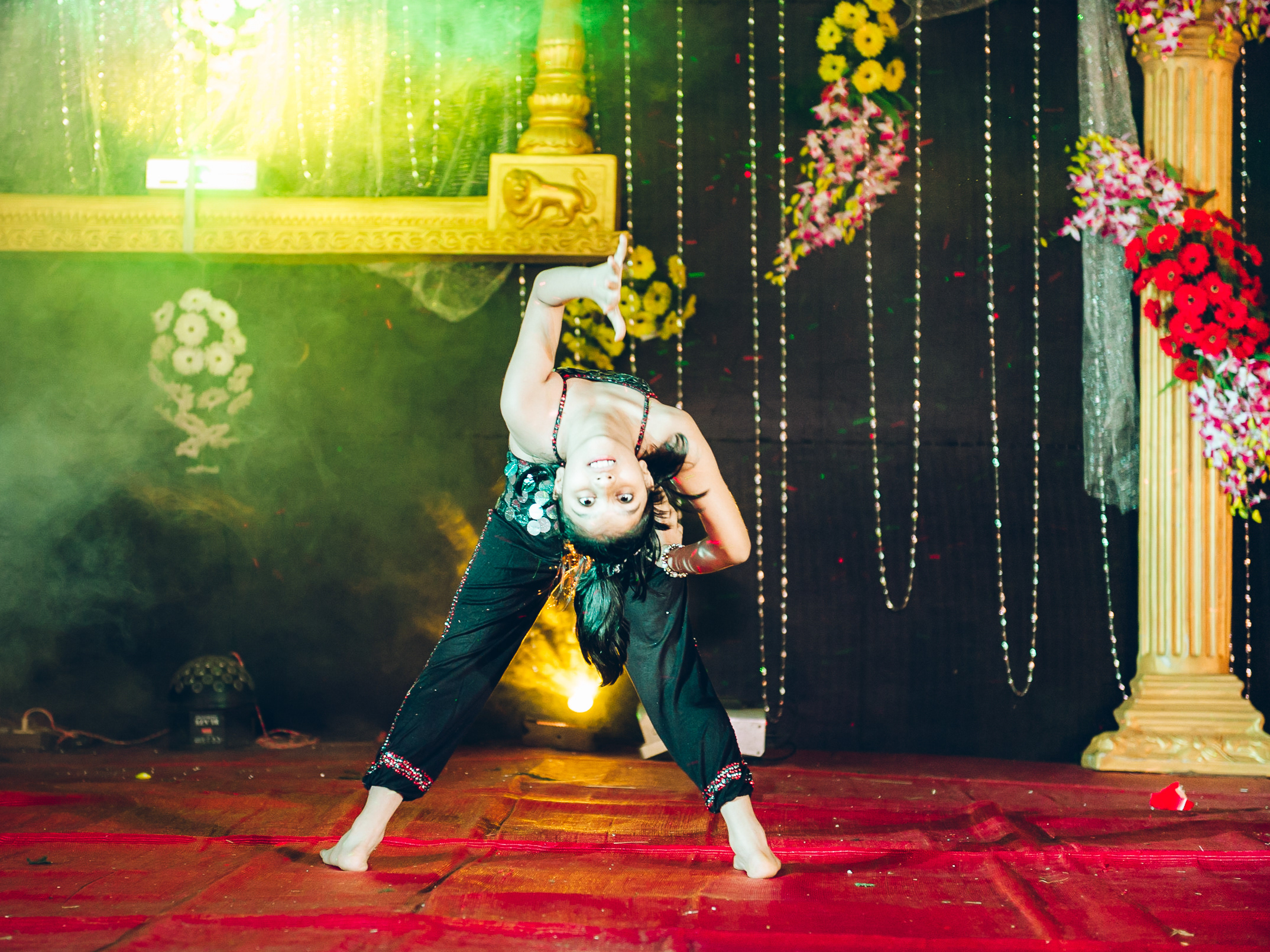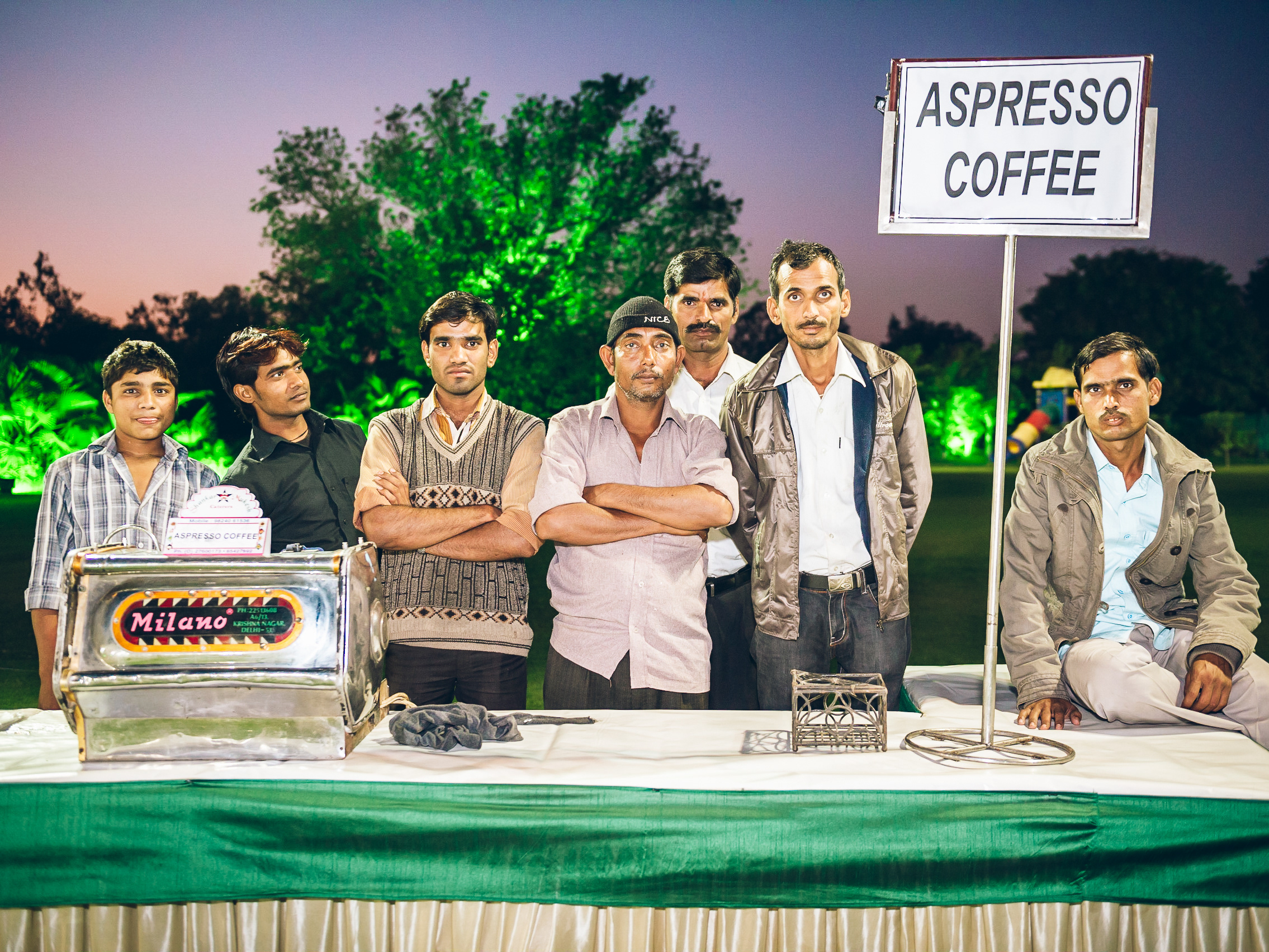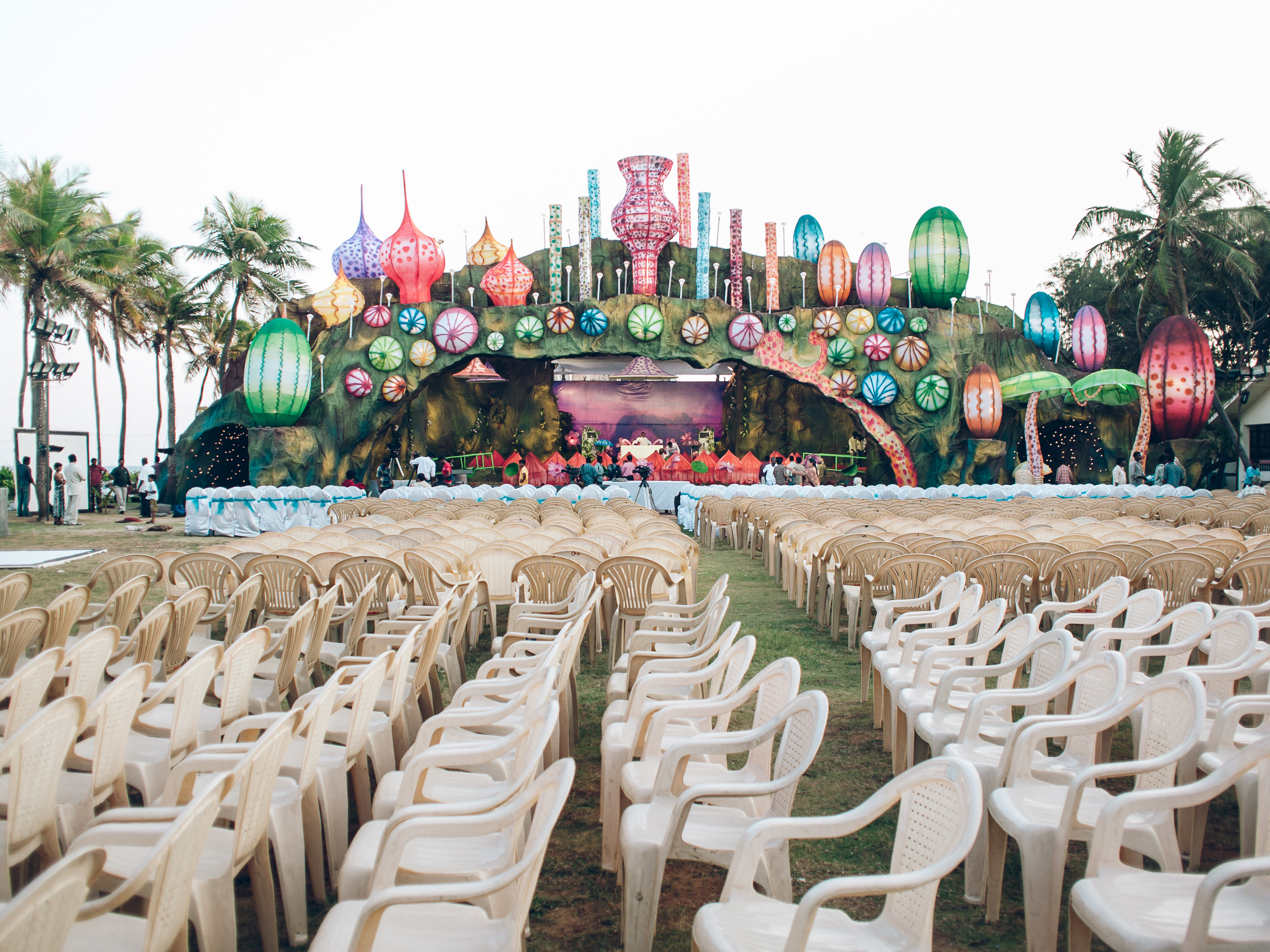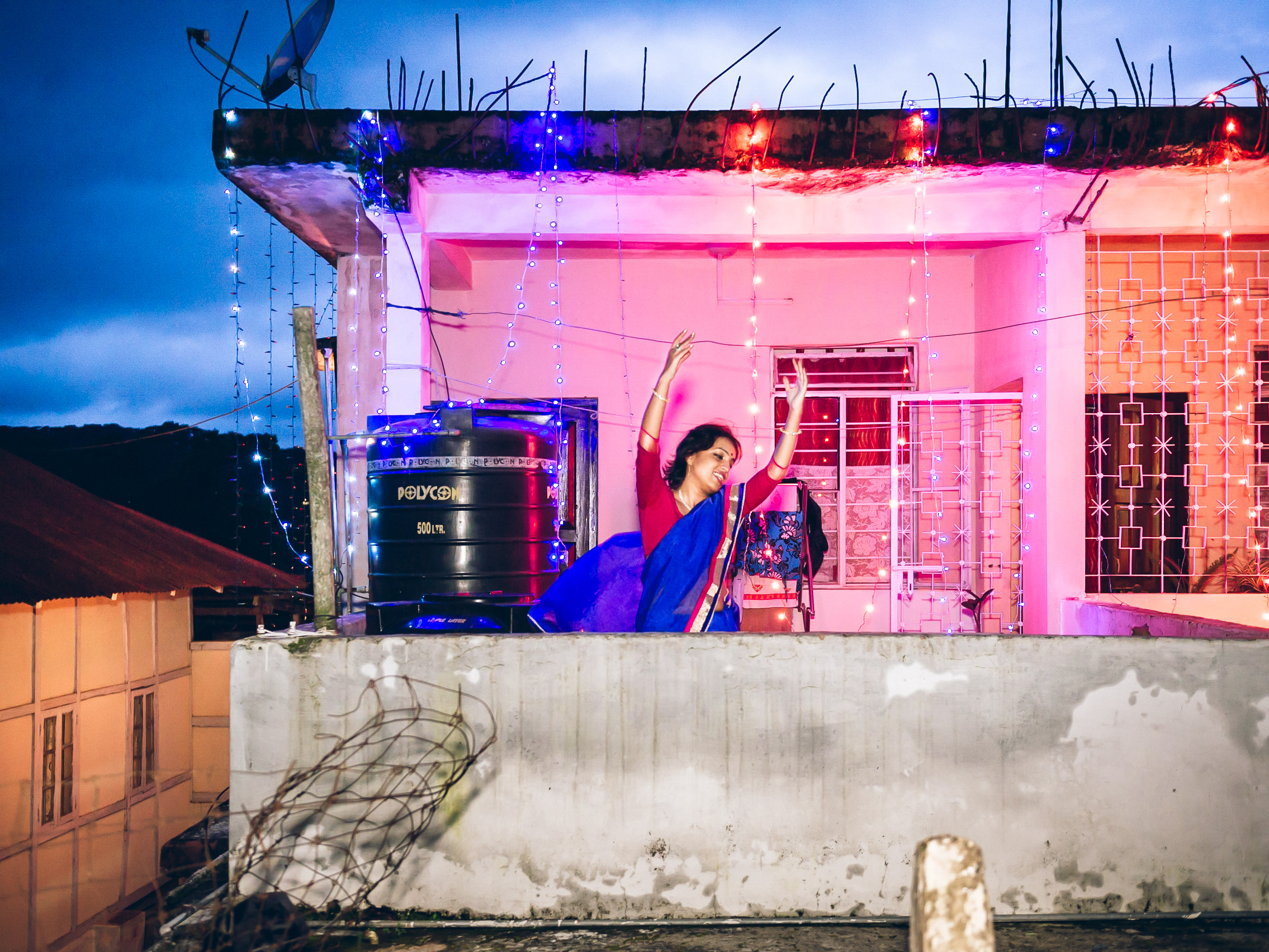Interview with Sara Rosen for Huck Online
Who are some of the artists, photographers, or works that have inspired your approach to visual storytelling?
My influences come mainly from colour photography—especially where colour is integral to the dynamics of the visual. Among the first photographers I took to were Martin Parr and Lars Tunbjörk, both keen observers of modern life. I’ve always had an affinity to Lise Sarfati’s portraiture over the years. Her latest book Oh Man is a visually rewarding creation on so many levels. And then there’s Alec Soth for his visual narratives. I keep going back to Niagara.
But I’m also inspired by stand-up comedians—Seinfeld, Russell Peters, Louis CK (“Everything is Awesome and Nobody’s Happy!”)—for their ability to see humour in mundane situations. In my practice too, I channel social critique out of everything from the sublime to the ridiculous.
At what point did you realize you wanted to document the wedding industrial complex as an embedded photojournalist, so to speak?
Between 2007 and 2015, I used to work as a wedding photographer and travel all across India. It was clear from the very beginning that the wedding environment was a rich source of material for commentary. I was learning about my country and questioning everything. As I matured into an artist, I was able to respond to these impulses. That is how Matrimania was born. Speaking of the wedding-industrial complex, I shot this picture (below) in December 2018. Too bad it couldn’t make it to the book.
How has working as a commercial wedding photographer given you the inside view of the industry – and what are some of the key issues, themes, and motifs you are addressing in this body of work?
Weddings are like anthropological laboratories. People are vulnerable, willing performers in their moments of celebration and transition. But beyond the obvious that is visible, there are problematic undercurrents to the institution of marriage in India. For example, the oppressive patriarchy that limits the potential of women and places unfair demands on men; the perpetuation of the caste system; and the glaring divide between rich and poor, to name but a few. It’s almost as if every vexing social problem in India is either going to a wedding or coming back from it.
In a world where everything is over the top, what are some of the most impressive things you have seen occur at weddings?
In a world where everything is over the top, what are some of the most impressive things you have seen occur at weddings?
In a country as populous as India, gatherings are bound to be large. Whether it is extravagant or not is subjective, especially when seen through from a Western perspective. It is enough to say that whether rich or poor, we tend to overreach when spending for a wedding. I’m always impressed by the art of catering to thousands of mouths. Indian weddings are massive meet-greet-and-eat operations. All guests will be fed to satisfaction. I’ve been to a wedding in North Karnataka where 400,000 mouths were fed in one afternoon.
My parents’ generation was a time when India was a far poorer country. The middle class today is comparatively much better off. Who doesn’t want to throw the biggest party of their lives? My objection is to the fact that parents see it as their party to throw.
How would you describe the aesthetic sensibilities of the Indian wedding?
Aesthetic sensibility is specific to a culture. It is beyond the realm of fair criticism. But it’s worth noting that all the visuals in Matrimania are from the best day of somebody’s lives! :)
Did you encounter any discoveries or surprises while making this work?
I first coined the word ‘Matrimania’ in 2008. I could never have imagined a book back then, certainly not this one where the designers Kummer & Herrman have so successfully delivered the Matrimania experience. The book also benefited from new technology in offset printing available at Longo in Italy. They were able to reproduce the wide colour gamut that this work demanded. Btw, the book smells great!
Could you share something that viewers might not immediately understand when looking at these photographs as an outsider?
While there is no such thing as an ‘Indian’ wedding, since weddings differ from one region to another, Matrimania is an approximation constructed from the experience of 150 weddings. The sequence of the book roughly mimics one long night at this quasi-wedding.
____________________________________________________________
Interview with Jyni Ong for It's Nice That
Please can you tell us about the social caste system in India that provides a social context to your work?
I’m compelled to oversimplify when attempting an answer to this question. The caste system as well as the patriarchy are ancient power structures but it is more useful to study them in the contemporary context. They determine one’s specific role in society in relation to others and determines one’s access and limits to opportunities. This system of privilege is assigned at birth and casts a long shadow (or shines a bright light) over the course of one’s life.
In India, the ‘arranged marriage’ system is still widely prevalent wherein parents and the extended family step in to play the role of Tinder for their ‘children’. The arranged marriage is more-or-less a system of preserving and extending caste privileges. Nobody ever tries to get their son or daughter married down the caste ladder!
The visually joyous occasion of a wedding rides on a complicated undercurrent stirring the institution of marriage. This dichotomy is what I illustrate in Matrimania which comprises a fictional photo essay (one long night at an Indian wedding) to be read along with my personal essay, ‘Bond & Bondage’. There is too much at stake and too many stakeholders in a wedding. The family gets involved in matters which should ideally be a private decision between two consenting adults. I refer to this in my essay as “family bonds run marathons.” Beneath the glossy veneer of public celebrations, there are these transactions that become a matter of life and death. Very simply put, caste and patriarchy are ready reckoners to explain a clutch of confusing (to the foreign reader) headlines like these:
This is the state of the nation in the 21st Century. People are killing and getting killed in the name of family honour (shorthand for transgressing caste and patriarchy strictures). Young lovers are choosing to take their own life rather than face their parents and society. Matrimania packages this depressing reality within shocking pink linen covers.
How did you start working on this project? How did you come to work on it?
In mid-2006, soon after photography school in Paris, I returned home to Bangalore and tried to find work as a photojournalist. There were no serious jobs in Indian news media but I found a niche in applying photojournalistic skill to Indian weddings. That caught on pretty quickly and I went on to shoot over a 150 weddings. Soon I noticed images that although didn’t find a place in the wedding album were still valid for me. That’s when I realised that at every wedding I was seeing two narratives in parallel—the blue sky edit for the typical wedding album and the dark night edit. I showed a very early version to Mark Power and Martin Parr at different times and their comments convinced me that I was on to something.
Please can you tell us about the weddings you attended and how they different? What did you learn from photographing these projects that you applied into the making of your book?
An early decision to work as a solo photographer singularly affected the way my wedding photography practice would evolve into a pan-India experience. I got invited to photograph weddings across the country, across classes and societies. This incredible variance was critical in shaping Matrimania as a research into what unifies a country so diverse and divided. Working solo also helped me forge personal relationships which in turn opened many doors, especially as I began work on my next major project The Last Days of Manmohan (2014) on the political culture in India.
A photo book on Indian weddings runs the risk of getting reduced to a pretty coffee-table book or a fun book of bizarre ‘Great Indian Wedding’ moments. But I saw a compelling reason to shift the direction of Matrimania into a more solid work that took on serious issues in India today. The humour that runs through the work is only a sugar-coating on the bitter pill.
How are things progressing socially in India? Is it still very segregated? Do you think there will be any social advancements in India in the future?
Social advancement in India will be when we create a socially equitable environment which is no longer conducive for “matrimania” to exist. When that happens, people will be free to choose their own partners and will marry for love. When that happens, a whole lot of related problems will cease to exist. For example, India’s female infanticide phenomenon is intrinsically connected to the pressures of the wedding day. Gita Aravamudan has written the book on this subject.
Our parents’ generation was a time when India was a poor country. The middle class is comparatively much better off today. Who doesn’t want to throw the biggest party of their lives? My objection is to the fact that parents see it as their party to throw. Further, in an oppressively patriarchal system, it is the girl’s father who picks up the bill for the party. I refer to this in my essay where I say, “an Indian couple typically gets married twice in their lifetime…” If the young couple were able to act on their own agency, I believe there would be no “matrimania”.
What needs to change for more progression to happen?
Indians like to think of themselves as a historically tolerant people but then Indian society is also chronically homophobic. This is one of those rare points of discussion where Hindus, Muslims, and Christians stand in agreement while using Indian culture to justify their homophobia. Yet, India is changing. It was only a year ago that the supreme court abolished a 19th-century law that criminalised homosexuality. It is only a matter of time when civil liberties for the LGBT communities are recognised. Again, this will defeat the culture of “matrimania”.
The Sakshi in my story [see the essay Bond & Bondage] is very much an exception. Surely, more and more modern Indians are defying the norms but unless this happens in the millions, it will remain the exception rather than the rule. The woman featured on the book cover is also an exception. She and her boyfriend married for love. They decided to have their wedding in her home up in the hills. It was an intimate wedding with only their friends; his family did not approve and did not show up. They live happily together far away from the home politics.

